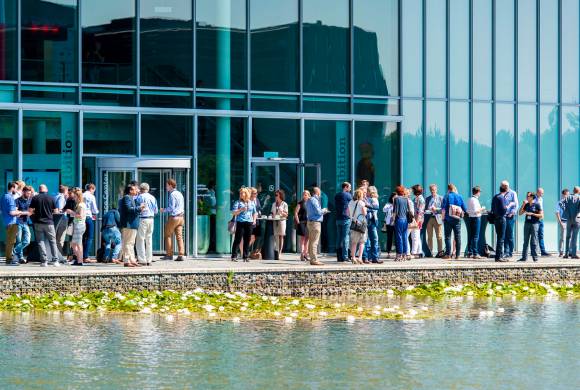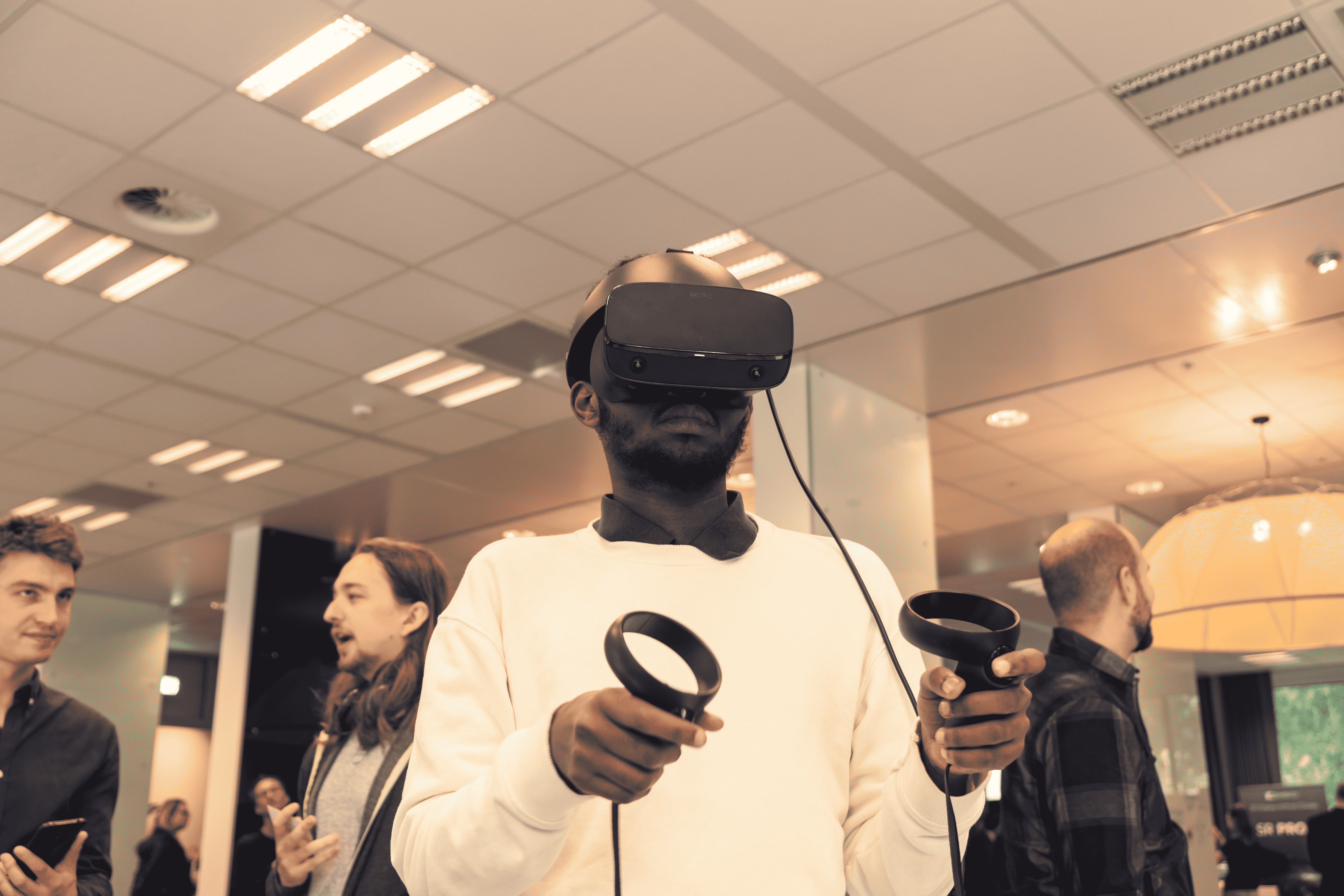
Sensors in your shoe to measure running performance, a special earpiece that “grabs” your phone while driving, and a glove to control games. All beautiful hardware gadgets that have been developed in the Brainport Eindhoven region.
But more happens than just hardware, which will become clear at the Software Centric Systems Conference. On Wednesday, May 25th for the second time the conference will be held during the DTW. This year with a new name: the first edition was called the Bits & Chips Software Engineering Conference.
 E52 publishes a series of articles in preparation for the Dutch Technology Week (23-29 May). This is the fifth part. Here the earlier parts.
E52 publishes a series of articles in preparation for the Dutch Technology Week (23-29 May). This is the fifth part. Here the earlier parts.
Wim Renders, working at Brainport development, says: “That we are doing great with hardware, that’s no secret. But the software part, that’s what most people don’t know about.”
According to him, it’s important that not only the audience is given the widest possible picture of what is happening in the Brainport region, but also large companies and multinationals need to understand this. “The Dutch Technology Week is the ideal showcase to reach that goal.”
Collaboration
Developments in software become visible in a rapid succession. The complexity increases and according Renders companies can not afford it to work on their own. “Therefore, we call for cooperation between different companies.”
Such collaboration between companies is already there with the High Tech Software Cluster (we wrote about it earlier). This cluster ensures that companies can use each other’s knowledge and expertise.
 One of these companies from the HTSC was Vector Fabrics, until it recently was declared bankrupt. The company, which looks for a restart, wants to develop debugging software. As an example, CEO Martijn Rutten points at the various recalls from automanufacturers. For example, there may be a warning light in the car, but the dealer can’t find the problem. Big chance that the problem is in the car’s software. This, according to Rutten, is just an innocent example, but it can get worse. “What if the throttle suddenly opens up all the way? That’s what happened at Toyota in the past, this of course nobody wants to witness.”
One of these companies from the HTSC was Vector Fabrics, until it recently was declared bankrupt. The company, which looks for a restart, wants to develop debugging software. As an example, CEO Martijn Rutten points at the various recalls from automanufacturers. For example, there may be a warning light in the car, but the dealer can’t find the problem. Big chance that the problem is in the car’s software. This, according to Rutten, is just an innocent example, but it can get worse. “What if the throttle suddenly opens up all the way? That’s what happened at Toyota in the past, this of course nobody wants to witness.”
Industry 4.0
For Rutten it is clear that the industry has changed: “Cars used to be purely mechanical products, which is no longer the case. But it is only for since recent years that manufacturers have their own programmers; before that they all came from outside. That’s simply not possible anymore. Several car brands are testing with self-propelled vehicles, for which a full-time team is needed to continuously work with the software.”
In a time where embedded systems and IoT applications can’t be missed anymore in the manufacturing industry, Rutten sees a lot of opportunities. According to him, software is still in its infancy. “We now see what the possibilities are like, and they are huge. But the industry also faces challenges. For example, take a look at a smart thermostat, which can be controlled remotely. This system must be totally secure: it has already occurred that through a software error, burglars could see when residents were home. And just recently Google Nest was in the news with a software error, causing the thermostats to disfunction. And these are only the well-known examples. Companies do not yet know what they will encounter. They are trying to reinvent the wheel. But that’s not necessary at all, sharing experiences with others is much wiser.”
Confessionals
Precisely that is the purpose of the conference. Businesses need to share their experiences. “A kind of confessionals, they will fully expose themselves. What challenges did they have to overcome in order to achieve a better product or a safer system?”
A small selection from the program: Claudio Silenzi of Ferrari F1 talks about the speed with which they need to develop software in the F1 sport. And LDRA’s Mark Richardson delivers a presentation about security for IoT embedded devices. Read the full program here.
Techwatch’s Nieke Roos, publisher of the magazine Bits & Chips, co-organizer of this event, adds: “It is not a one way street. This year, even more than last year, we will be giving opportunity for interactivity between visitors and speakers. All the lectures are scheduled twice and there is plenty of time afterwards to get into discussion with each other. We mainly work with real life examples. Visitors are challenged to think. ”
Registrations have just opened, and the first applications have arrived. Roos is confident to surpass the attendance of the first edition: “Last year visitors were very enthusiastic about the conference.”







